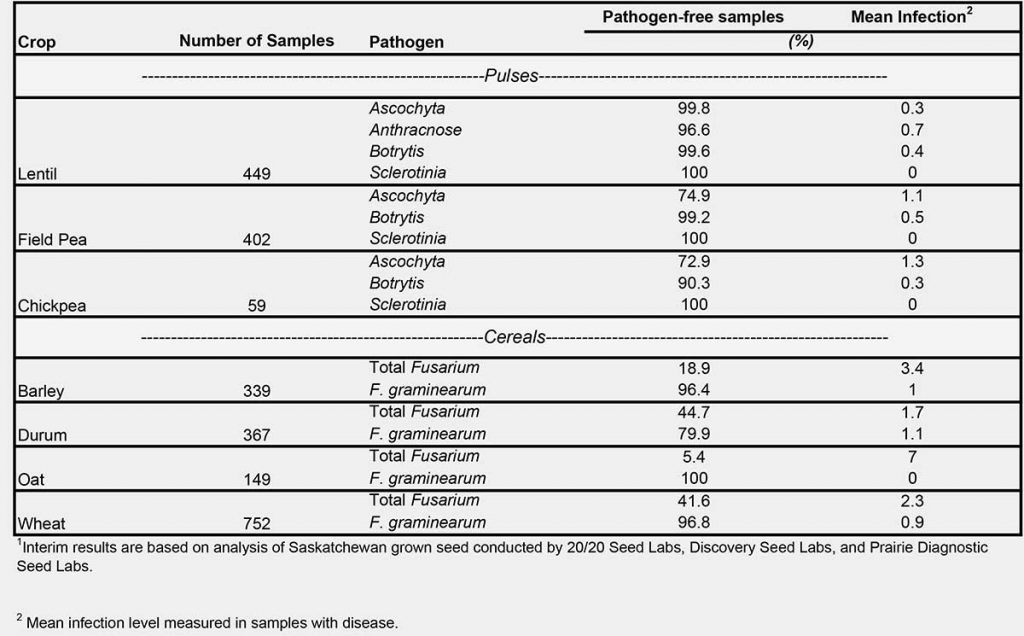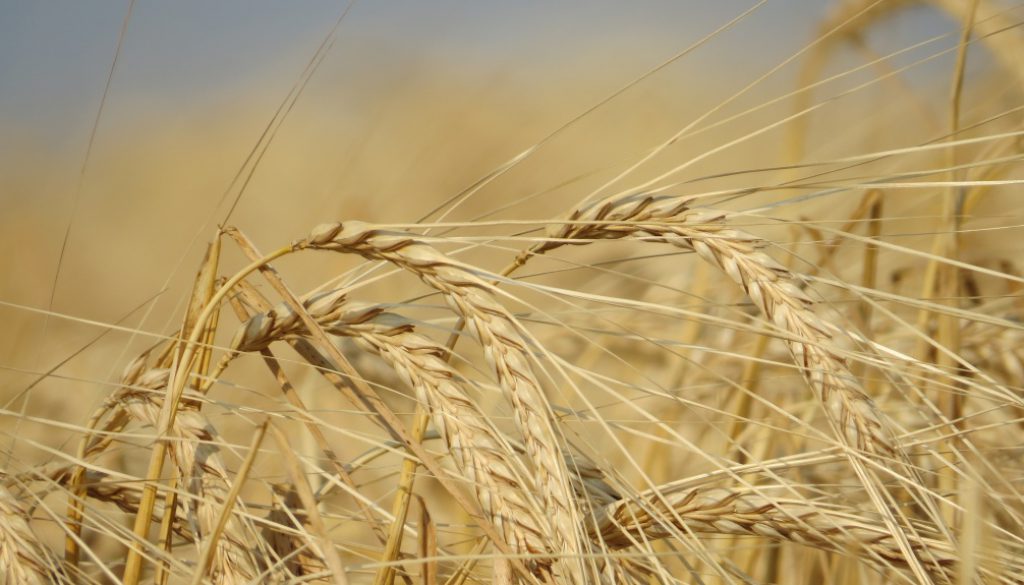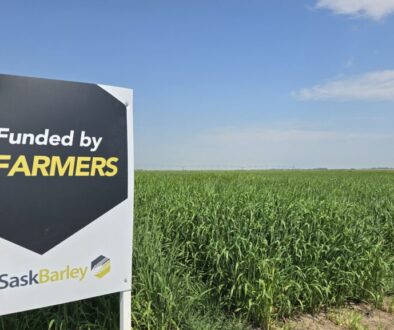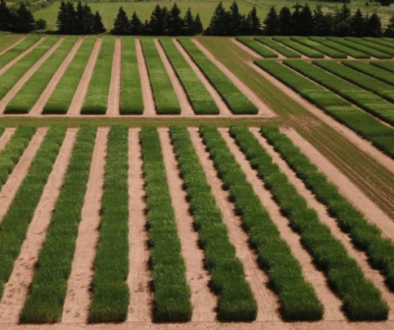Saskatchewan Seed Survey
By Saskatchewan Pulse Growers (SPG), Saskatchewan Wheat Development Commission (SaskWheat), Saskatchewan Barley Development Commission (SaskBarley), and Saskatchewan Oat Development Commission (SaskOats)
The Saskatchewan pulse and cereal commission groups gratefully acknowledge 20/20 Seed Labs, Discovery Seed Labs, Prairie Diagnostic Seed Labs, and Lendon Seeds for their continued participation in the annual survey of seed-borne pathogens on pulse and cereal seed grown in Saskatchewan.
This survey provides a record of seed-borne pathogen trends in pulse and cereal crops and allows for continued tracking of diseases over time. The interim seed quality data, based on seed analysis conducted by 20/20 Seed Labs, Discovery Seed Labs, and Prairie Diagnostic Seed Labs, from the time of harvest until the end of December, provide early insights into seed quality trends and help to identify potential pathogens of concern and their prevalence across the province.
Although this survey provides a benchmark for annual seed-borne pathogen levels across the province, it does not replace the need for testing of individual seed lots. Each seed lot is unique and it is important growers have their seed sources evaluated for quality—including disease screening, germination, vigour and thousand kernel weight—before spring planting.
Low disease levels of seed produced during 2021 has been a positive outcome of a challenging growing season. Largely attributed to extreme drought conditions during the growing season and at the time of harvest, interim data indicates a large proportion of pathogen-free pulse (lentil, field pea, chickpea) and cereal (barley, durum, oat, and spring wheat) seed. The mean infection level of the samples reporting the presence of disease is also below historical trends across all pathogens and crops.
Some of the diseases in the table below have been made available as a map, showing the different levels of pathogen-free seed and average infection levels of diseased samples by Crop District. The Saskatchewan Ministry of Agriculture compiled the maps, which are available at each participating commission’s website. Aggregate data is useful for identifying approximate levels of risk, but testing each seed lot remains important.
Table 1. Average percent of pathogen-free pulse and cereal seed samples and average infection levels measured in samples with disease analyzed as of December 28, 20211.

Click here to download maps (PDF)
For more information on selecting your seed for 2022, visit: https://barleybin.ca/act-early-to-secure-seed-for-2022/




